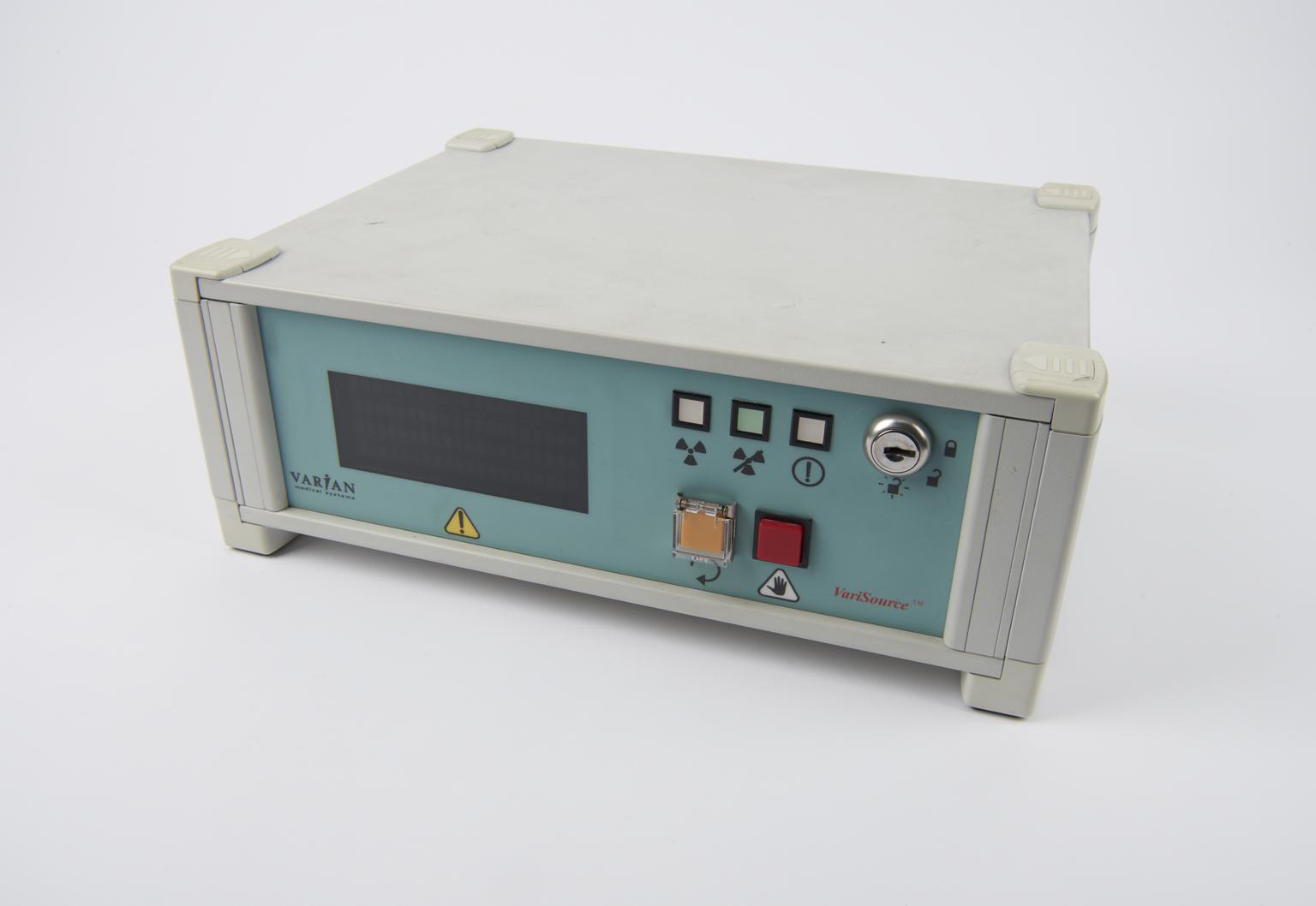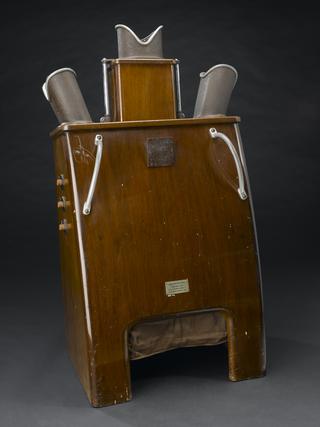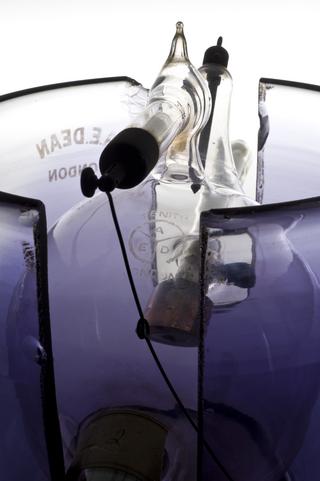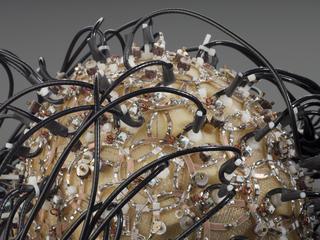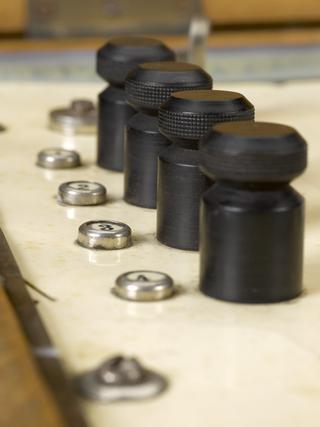Varisource 200 brachytherapy ‘afterloader’
Varisource 200 brachytherapy ‘afterloader’, used for storing and remotely delivering sources of radiation to treat cancer, serial number 393, made by Varian Medical Systems, Crawley, United Kingdom, 2005
More
A machine known as an afterloader, holds the tiny radioactive source (smaller than a grain of rice) in a safe place, until it is needed for treatment. The development of remote afterloading systems, which allow the radiation to be delivered from a shielded safe, and the use of new radioactive sources in the 1950s and 1960s, reduced the risk of unnecessary radiation exposure to the operator and their patients.
Brachytherapy is a form of radiotherapy which places radioactive sources close or even inside the area requiring treatment. It is usually used to treat prostate cancer, cervical and womb cancer and sometimes head and neck cancers. The advantages of this technique is that the treatment affects only a very localized area so exposure to healthy tissues is reduced. The radioactive source is applied through applicators typically a needle or plastic catheter. On completion of delivery of the radioactive sources, the applicators are carefully removed from the body. Low dose brachytherapy or radioactive seeds remain in the body over a period of a few months. High dose therapies are carried out for a few minutes per visit as part of a treatment plan.
- Measurements:
-
overall: 1150 mm x 5300 mm x 710 mm, 144 kg
- Object Number:
- 2019-297/1
- type:
- afterloader
